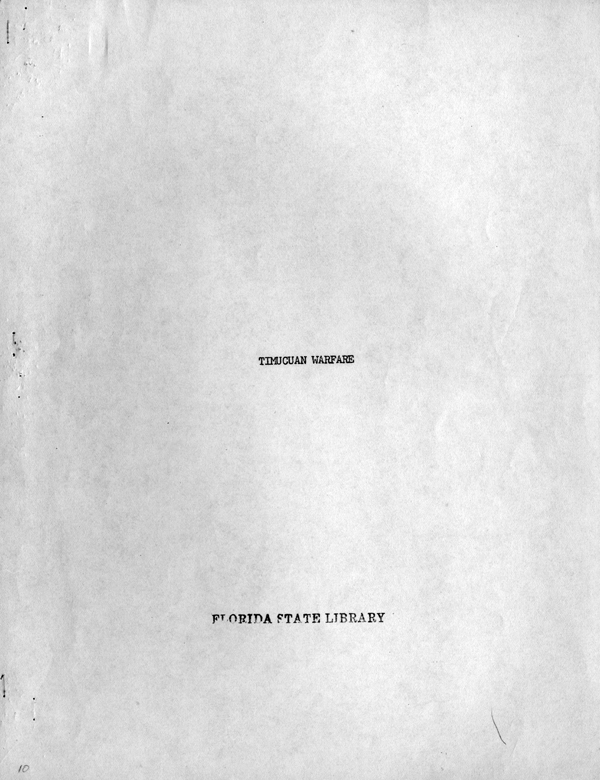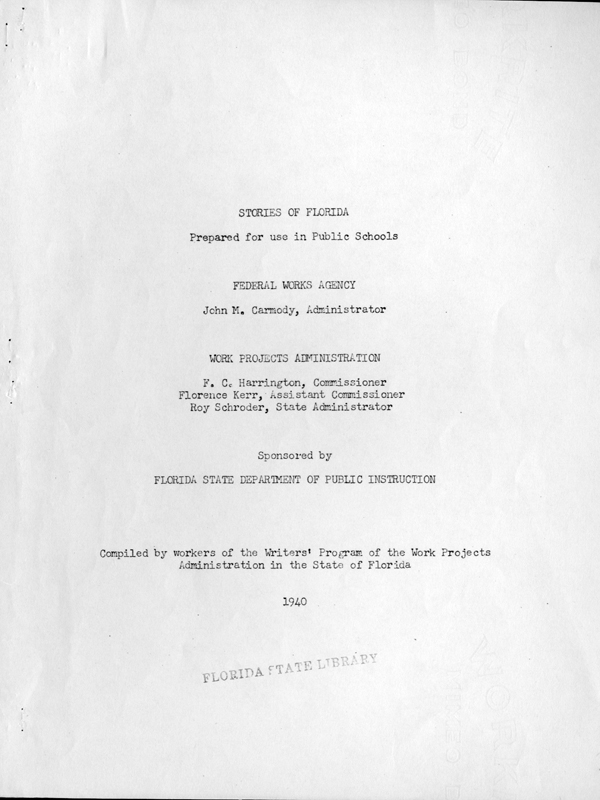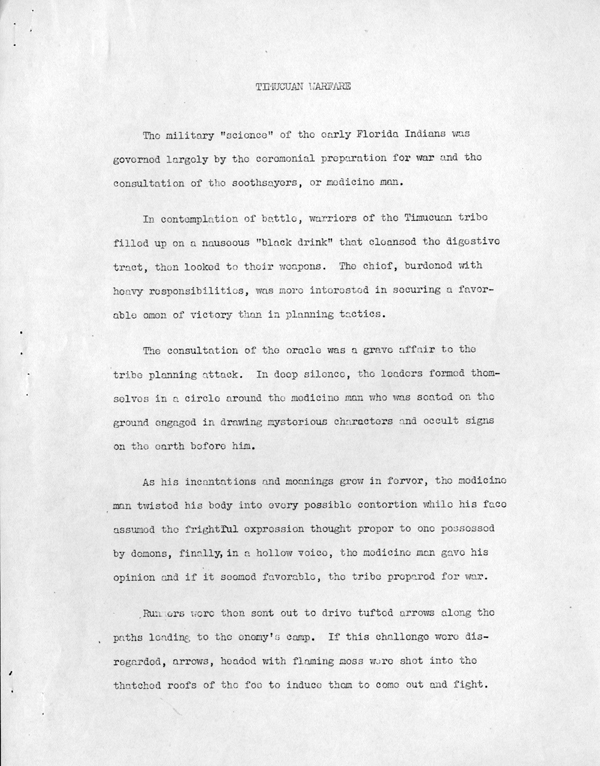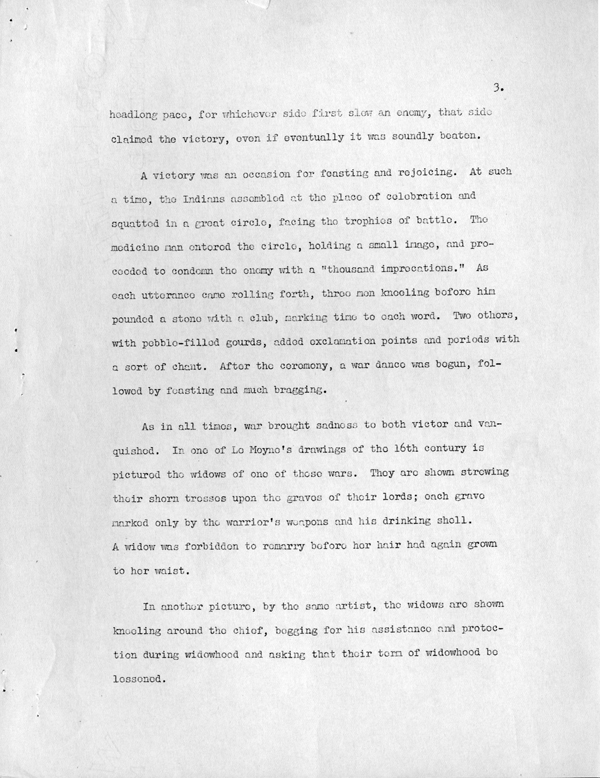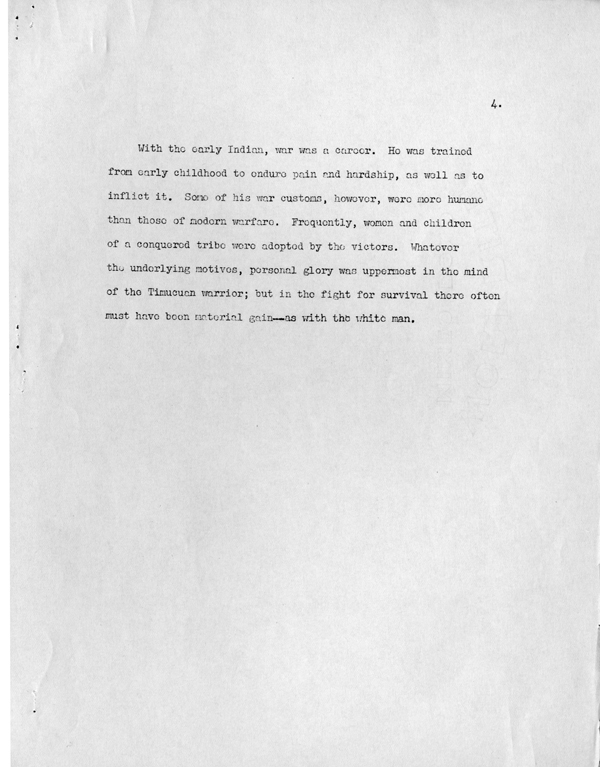Florida Memory is administered by the Florida Department of State, Division of Library and Information Services, Bureau of Archives and Records Management. The digitized records on Florida Memory come from the collections of the State Archives of Florida and the special collections of the State Library of Florida.

State Archives of Florida
- ArchivesFlorida.com
- State Archives Online Catalog
- ArchivesFlorida.com
- ArchivesFlorida.com
State Library of Florida
Related Sites
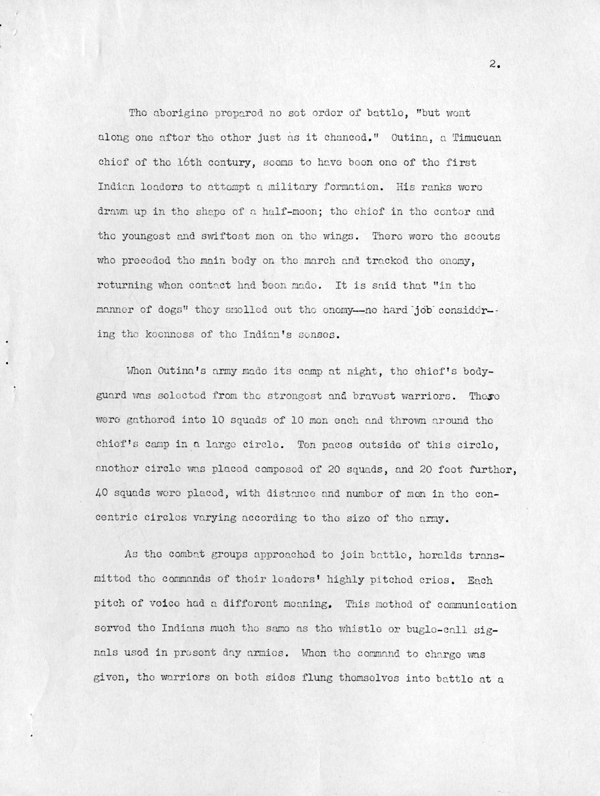
Description of previous item
Description of next item

Title
Published Date
[page 2]
The aborigine prepared no set order of battle, "but went along
one after the other just as it chanced." Outina, a Timucuan chief of the
16th century, seems to have been one of the first Indian leaders to
attempt a military formation. His ranks were drawn up in the shape of a
half-moon; the chief in the center and the youngest and swiftest men on
the wings. There were the scouts who preceded the main body on the
march and tracked the enemy, returning when contact had been made. It
is said that "in the manner of dogs" they smelled out the enemy-no
hard job considering the keenness of the Indian's senses.
When Outina's army made its camp at night, the chief's body-
guard was selected from the strongest and bravest warriors. These were
gathered into 10 squads and 10 men each and thrown around the chief's
camp in a large circle. Ten paces outside of this circle, another circle was
placed composed of 20 squads, and 20 feet further, 40 squads were
placed, with distance and number of men in the concentric circles
varying according to the size of the army.
As the combat groups approached to join battle, heralds
transmitted the commands of their leaders' highly pitched cries. Each
pitch of voice had a different meaning. This method of communication
served the Indians much the same as the whistle or bugle-call signals
used in present day armies. When the command to charge was given, the
warriors on both sides flung themselves into battle at a
Title
Subject
Description
Source
Date
Contributor
Format
Language
Type
Identifier
Published Date
Image URL
Thumbnail
Transcript Path
Image Path
Image Path - Large
Chicago Manual of Style
Timucuan Warfare. 1940. State Archives of Florida, Florida Memory. <https://www.floridamemory.com/items/show/181545>, accessed 15 December 2025.
MLA
Timucuan Warfare. 1940. State Archives of Florida, Florida Memory. Accessed 15 Dec. 2025.<https://www.floridamemory.com/items/show/181545>
AP Style Photo Citation

 Listen: The Assorted Selections Program
Listen: The Assorted Selections Program